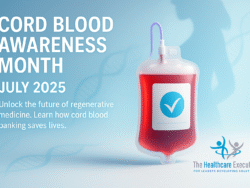Patient Experience Week | April 29 – May 3

- Posted by Greg Wahlstrom, MBA, HCM
- Posted in Health Observance Calendar
Executive Leadership in Human-Centered Care
Published: April 29, 2025
Patient Experience Week, celebrated April 29 through May 3, 2025, is a national opportunity to elevate the importance of empathy, engagement, and outcomes in healthcare delivery. Originally launched by the Beryl Institute, the week honors clinicians, support staff, executives, and administrators committed to human-centered care. For healthcare executives, this observance provides a chance to assess how strategy, operations, and organizational culture align with the patient voice. Patient experience is no longer confined to satisfaction surveys—it’s a core dimension of value-based care, brand trust, and health equity. Hospitals like Cleveland Clinic have made patient experience part of their mission, embedding empathy training, real-time feedback, and executive rounding into everyday practice. Leaders must consider whether their patient experience goals are tied to system-wide metrics, care team performance, and board reporting. Patient stories, both positive and critical, offer a strategic lens on organizational integrity. Patient Experience Week is not simply a recognition event—it’s a reflection of institutional accountability.
Executive sponsorship is imperative to advancing patient experience from an initiative to an integrated system-wide strategy. While frontline teams are often the face of the experience, it is the C-suite that sets the tone, resources the priorities, and operationalizes the outcomes. Every patient journey—from pre-visit communication to discharge instructions—is shaped by system design. Organizations like NewYork-Presbyterian have restructured patient experience into high-impact units with executive reporting lines. During this week, healthcare leaders should review institutional dashboards for experience metrics across service lines, including disparities by race, language, or insurance status. Inpatient units, emergency departments, specialty clinics, and virtual care must all be evaluated with equal rigor. Transparency is essential. Sharing patient experience trends with medical staff, employees, and governing boards ensures accountability and drives improvement. Leaders must also model the values they expect others to uphold—visibility, empathy, responsiveness, and respect. Patient Experience Week is the moment to demonstrate those values openly and sustainably.
Equity in the patient experience is an increasingly urgent executive mandate. Data shows that patients from historically marginalized groups consistently report worse experiences with communication, respect, and shared decision-making. According to the Agency for Healthcare Research and Quality (AHRQ), these gaps persist across geography, hospital size, and payer type. Healthcare systems must do more than celebrate diversity—they must embed equity into their patient experience architecture. At institutions like UChicago Medicine, this includes cultural humility training, interpreter services, and patient and family advisory councils that represent all communities served. Executive teams should review how inclusive design is reflected in forms, signage, policies, and clinical interactions. Experience leaders should partner with equity officers, quality teams, and community representatives to co-design improvement strategies. Patient Experience Week is an ideal time to share progress on equity initiatives with internal teams and external stakeholders. True excellence in patient experience cannot exist without justice.
Technology also a growing role in the evolution of the patient experience, offering both opportunities and risks. Portals, text reminders, digital feedback tools, and virtual care platforms must be designed to enhance—not fragment—the human connection. During this observance week, CIOs and CMOs should brief boards on how patient experience is being shaped by digital touchpoints. At Mayo Clinic, real-time patient surveys are integrated into care processes and reviewed weekly by multidisciplinary teams. Executives must ensure these tools are inclusive, accessible, and responsive to all age groups and literacy levels. Technology should not replace empathy—it should amplify it. Leaders must also consider how EHR burden, staffing ratios, and administrative inefficiencies affect clinician capacity to engage with patients meaningfully. Patient Experience Week provides the strategic frame to realign systems with values, using digital innovation to reinforce compassion, not compromise it. The future of care will be hybrid—and it must remain human.
As Patient Experience Week concludes, healthcare leaders have an opportunity to reaffirm their core commitment to every patient, every family, every day. Recognition ceremonies, employee spotlights, and patient gratitude walls are valuable—but so is strategic reflection. Boards of directors should receive a briefing on system-wide experience metrics, stories that illustrate both success and improvement opportunities, and operational plans tied to performance. Communications teams can amplify experience priorities externally through storytelling, patient highlights, and brand trust campaigns. Executives should also ensure that their workforce feels seen and supported—because employee experience is inseparable from patient experience. When leadership invests in the full ecosystem of care, outcomes improve, reputations grow, and loyalty deepens. Patient experience is not a department—it is the culture of a hospital made visible. And it begins with executive leadership willing to listen, learn, and lead with compassion.
Discover More
Explore how executive leadership is redefining patient-centered care through innovation, empathy, and system-wide engagement.



